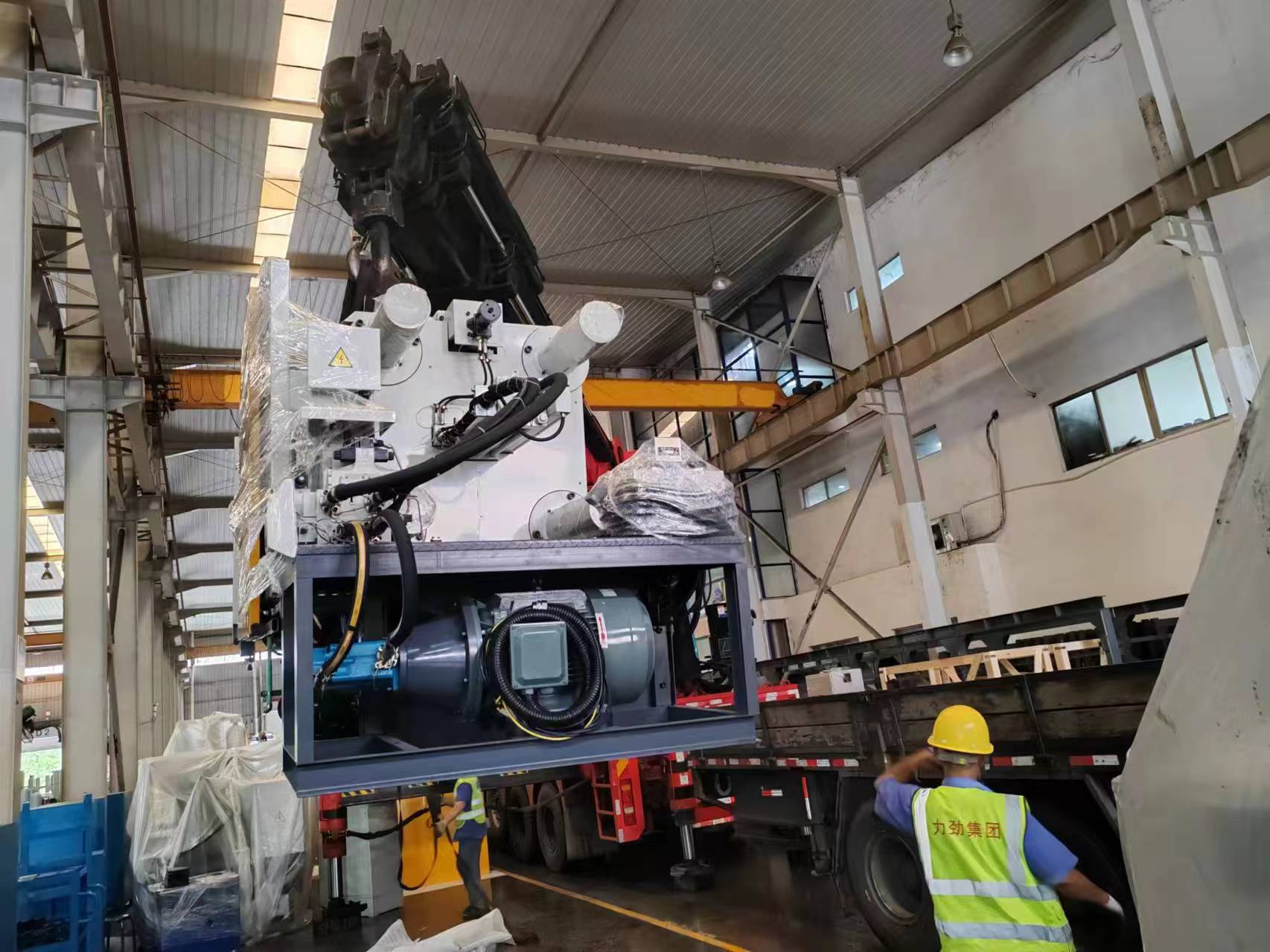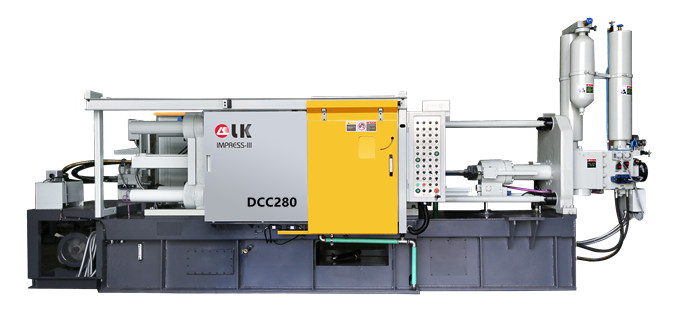Zinc Nickel Plated Fasteners Small Size
LK Die Casting Machine / 2024-08-29 17:02:19
2024-08-29 by Cherry
Introduction
In modern industry, the quality and durability of
fasteners play a vital role in the stability of
the entire mechanical system.
Zinc-nickel plating, as an effective anti-corrosion
coating is widely used in various fasteners, especially
on those occasions where the anti-corrosion performance
is extremely high.

This article will explore the application of zinc-nickel
plating on small-size fasteners and their relevance to
die-casting machine manufacturing, as well as how this
technology can improve product performance.
Overview of zinc-nickel plating
Zinc-nickel plating is a metal alloy electroplating
process that provides excellent corrosion protection
by depositing an alloy layer of zinc and nickel on
the surface of the fastener.
The nickel content in the coating is usually between
12% and 15%, which makes zinc-nickel plating superior
to traditional pure zinc plating in corrosion resistance
and wear resistance.

Characteristics of zinc-nickel plating
Zinc-nickel plating combines the sacrificial anode properties
of zinc and the high corrosion resistance of nickel,
allowing fasteners to maintain a long service life in harsh
environments.
Compared with other protective coatings, zinc-nickel
plating performs particularly well in high-temperature
and high-humidity environments.
Advantages of zinc-nickel plating
Excellent corrosion resistance: zinc-nickel plating
can maintain corrosion resistance for more than 1,000
hours in salt spray tests.

Excellent wear resistance: The addition of nickel
significantly improves the hardness of the plating,
making it perform well in friction environments.
Environmentally friendly: The electroplating process
of zinc-nickel plating is relatively environmentally
friendly and reduces the emission of harmful substances.
Demand for small-size fasteners
Small-size fasteners are widely used in electronic
equipment, precision instruments, automobile manufacturing,
and other fields, which have extremely high requirements
for the dimensional accuracy, surface treatment, and
durability of fasteners. Zinc-nickel plating has become
an ideal surface treatment solution for small-size
fasteners due to their excellent characteristics.
Characteristics of small-size fasteners
Small-size fasteners are usually a few millimeters or
even smaller in diameter but have extremely high requirements
in terms of load-bearing weight and corrosion resistance.
These fasteners need to be precisely manufactured to ensure
that no errors occur during assembly.
Application of small-size fasteners
Small-size fasteners are widely used in:
1. Electronic equipment: such as mobile phones, tablets,
smartwatches, etc.
2. Automotive industry: especially the fixing of interior trims
and precision parts.
3. Medical equipment: requires strict anti-corrosion and non-toxic
requirements.
The relationship between zinc-nickel plating and
die-casting machines
The relationship between the small size of zinc-nickel
plated fasteners and die-casting machines are mainly
reflected in the dimensional accuracy and the control
of die-casting process.
The dimensional accuracy of die-casting parts is one of
the key features of the structural processability of
die-casting parts. It is affected by many factors,
including the design and manufacturing accuracy of
the die-casting mold, the control of the die-casting
process, etc.
The dimensional accuracy of die-casting parts
directly affects their assembly and use performance,
and must meet the product design and specification requirements.
For small-sized zinc-nickel plated fasteners, the control of
their dimensional accuracy is particularly important,
because small-sized parts have higher requirements for
dimensional accuracy and any slight deviation may affect
their function and use effect.
The selection and use of die-casting machines are crucial
to ensure the dimensional accuracy of die-casting parts.
The performance and parameter settings of the die-casting
machine directly affects the filling, solidification, and
the cooling process of the molten metal during the die-casting
process, which in turn affects the dimensional accuracy of
the final product.
For example, the settings of the die-casting
machine's clamping force, injection pressure, mold temperature,
and other parameters need to be finely adjusted according to
the specific die-casting materials and product requirements
to ensure the dimensional accuracy and surface quality
of small-sized parts.
When manufacturing small-sized fasteners, die-casting machines
are often used to produce the raw material parts of these
fasteners, especially in large-scale production.
The combination of zinc-nickel plating and die-casting
machines are the key to achieving high-performance fasteners.
The role of die-casting machines in the production of
small-sized fasteners
The die-casting machine injects liquid metal into the mold
under high pressure to quickly form the initial shape of
the fastener.
This method can not only efficiently produce
small-sized fasteners, but also ensure the accuracy and
consistency of the product. The use of die-casting machines
not only improves production efficiency but also lays a
solid foundation for subsequent surface treatment.
The combination of die-casting and zinc-nickel plating
Although the die-casting machine can form quickly, the finished
fasteners usually require further surface treatment due to
the properties of the metal material. Zinc-nickel plating
plays an important role in this stage.
It not only provides excellent corrosion protection
but also enhances the durability of the fasteners.
Die castings treated with zinc-nickel plating can
be used in more demanding environments.
Importance of quality control
In the manufacturing process of small-size fasteners, the
combination of die casting and plating processes requires strict
quality control. Any slight error may cause product failure.
The uniformity and thickness control of zinc-nickel plating is
the key to ensuring the quality of the final product.
Application examples of zinc-nickel plated fasteners
Zinc-nickel plated fasteners are widely used in various industries,
especially in those occasions where high corrosion resistance of
fasteners are required.
The following are several typical application examples:
1. Automobile industry
In automobile manufacturing, zinc-nickel-plated fasteners are
widely used to fix chassis and engine components.
These parts are exposed to harsh environments such as rain,
salt, and mud for a long time. Zinc-nickel plating can effectively
prevent corrosion and extend the service life of the parts.
2. Electronic equipment
Small-size fasteners are crucial in electronic equipment,
especially when electrochemical corrosion needs to be prevented.
Zinc-nickel plating not only provides good corrosion resistance
but also prevents electrochemical reactions inside electronic
equipment, thereby improving the reliability of the equipment.
3. Aerospace
The aerospace industry has extremely high-quality requirements
for fasteners, especially at high altitudes and in extreme
climate conditions. The excellent performance of zinc-nickel
plating makes it the first choice for small-sized fasteners
in the aerospace field.
Production Challenges of Zinc-Nickel Plated Fasteners
Although zinc-nickel-plated fasteners excel in many aspects,
the challenges in their production process cannot be ignored.
Here are some key production challenges and their coping
strategies:
1. Plating uniformity
Due to the complex geometry of small-sized fasteners,
ensuring the uniformity of the plating becomes a major
challenge. Non-uniform plating thickness may cause the
performance of the fastener to deteriorate or even fail.
To this end, the electroplating process requires strict
parameter control, such as precise regulation of current
density, time, and temperature.
2. Surface pretreatment
Before the fasteners are zinc-nickel plated, they must
be surface pretreated to remove any impurities and oxides.
This step is critical to the adhesion and anti-corrosion
performance of the coating. Inadequately treated surfaces
may cause the coating to fall off or bubbles to appear,
affecting the overall performance of the fastener.
3. Post-plating treatment
The fasteners after zinc-nickel plating need to be
passivated to further enhance their corrosion resistance.
Passivation can form an additional protective film and
increase the durability of the coating. However, during
the passivation process, it is necessary to pay attention
to control the concentration of chemical agents and
the treatment time to avoid damage to the coating due
to excessive treatment.
In addition, the small size of zinc-nickel-plated fasteners
also involves the control of coating performance.
For example, the proportion of zinc-nickel content in the
coating and the color of the coating after passivation
are affected by factors such as the temperature of the
plating solution, the current density, and the main components
of the plating solution.
The control of these factors
is not only related to the beauty and corrosion resistance
of the coating, but also indirectly affects the small size
and shape of the fasteners, thereby affecting their performance
and life.
Development trend of zinc-nickel plating technology
With the changes in industrial demand and the advancement
of technology, zinc-nickel plating technology is also developing.
The following are several future development trends of
zinc-nickel plating technology:
1. Environmentally friendly plating technology
With increasingly stringent environmental regulations,
zinc-nickel plating technology is developing in a more
environmentally friendly direction.
The introduction of new lead-free plating processes
and low-energy electroplating
equipment will help reduce environmental pollution while
improving production efficiency.
2. High-performance plating development
The future zinc-nickel plating will not only be limited
to corrosion protection but will also have more functions,
such as self-healing properties, antibacterial properties,
etc.
The introduction of these new functions will further
expand the application range of zinc-nickel-plated fasteners
and meet more complex industrial needs.
3. Automation and Intelligence
With the advancement of Industry 4.0, the level of automation
and intelligence in the production process of zinc-nickel
plating will continue to improve. Automated electroplating
lines and intelligent monitoring systems will be able to monitor
and adjust plating parameters in real time to ensure the
stability and consistency of product quality.
Conclusion
Zinc-nickel plated fasteners, especially small-sized fasteners,
have become an indispensable part of the modern industry due to their
excellent corrosion resistance and a wide range of applications.
By combining with traditional manufacturing technologies such as
die-casting machines, zinc-nickel plating technology further
improves the performance and durability of fasteners.
For more info, you can refer to:
https://www.tiktok.com/@lk_diecastingmachine/video/7405113006880820522
https://www.youtube.com/shorts/JLX410QV_kw
To learn further info about Die Casting Machines,
pls contact LK Die Casting Machine Authorized Official Agent
LK OFFICIAL AGENT OFFICE DCM
LK Die Casting Machine Authorized Official Agent for Egypt(EGY)
Saudi Arabia(ksa)
United Arab Emirates(UAE)
The Islamic Republic of Iran(Iran)
Qatar(QAT)
The State of Kuwait(Kuwait)
The Middle East
Address: 1. Industry Zone, South of Port Said Kebly, Cairo, Egypt
2. EX 14., EASTERN RING ROAD, AI RAYAN DISTRICT,
RIYADH, SAUDI ARABIA
Arabic Website: https://ae.zazdiecasting.com/
English Website: https://www.zazdiecasting.com/
Phone/WhatsApp/Wechat: 0086 13598704163
Mobile: +20 101 304 3317 +20 150 181 8310
Email: jack@zazmae.com ahmedmahmoud@zazmae.com
OTHER CONTENT
-

2024-09-19 14:16:15 LK Cold Chamber Die Casting Machine DCC900 Locking Force: 9000KN Die Height: 400-1000mm Space Between Tie Bars: 930x930mm Shot Weight: 13.5Kg Casting Area Max:2250c㎡
More -

2024-09-19 14:11:06 LK Cold Chamber Die Casting Machine DCC280 Locking Force: 2800KN Die Height: 250-650mm Space Between Tie Bars: 560x560mm Shot Weight: 2.9Kg Casting Area Max:700c㎡
More -

2024-09-19 10:23:07 LK Cold Chamber Die Casting Machine DCC580 Locking Force: 5000KN Die Heigh: 350-850mm Space Between Tie Bars: 760x760mm Shot Weight: 6.9Kg Casting Area Max:1250c㎡
More -

2024-09-19 10:11:20 LK Cold Chamber Die Casting Machine DCC400 Locking Force: 4000KN Die Height: 300-700mm Space Between Tie Bars: 669x669mm Shot Weight: 4.7Kg Casting Area Max:1000c㎡
More

